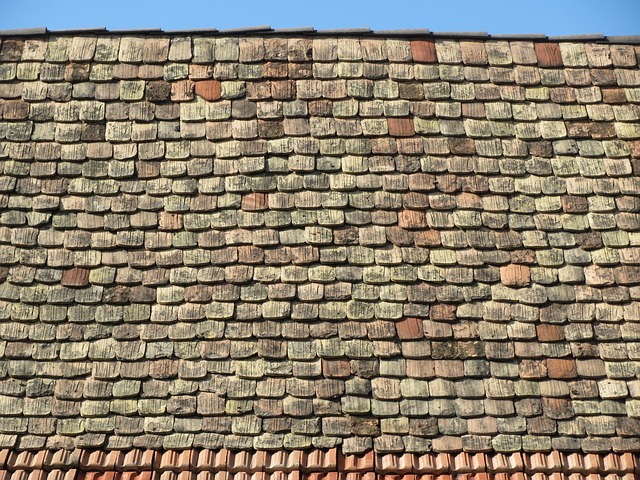Sustainable roof design, integrating green roofing systems and solar panels, offers a powerful synergy for enhanced urban eco-performance. Eco-friendly solutions like green roofs provide insulation, mitigate heat islands, support biodiversity, and reduce land use demands, while solar panels harness renewable energy. This dual approach not only boosts building efficiency but also contributes to healthier, more vibrant urban landscapes by promoting biodiversity, improving air quality, and reducing carbon footprints through natural insulation and enhanced cooling. Energy-efficient designs further benefit the environment by encouraging carbon sequestration and showcasing a comprehensive strategy where buildings actively support ecological conservation.
Unlocking Dual Sustainability with Green Roofs and Solar Systems
The world is witnessing a paradigm shift towards sustainable architecture, and at the forefront of this movement are innovative roofing solutions. This article delves into the harmonious fusion of two cutting-edge concepts: green roofs and solar systems. By exploring their individual benefits and synergistic partnership, we uncover a powerful approach to dual sustainability. From promoting urban biodiversity to reducing carbon footprints, these eco-friendly roof designs offer a holistic strategy for environmentally conscious building practices. Get ready to discover how combining nature’s ingenuity with solar power can revolutionize the way we construct our future.
# Blog Post Outline: Unlocking Dual Sustainability with Green Roofs and Solar Systems
The integration of green roofs and solar systems represents a powerful synergy for creating dual sustainability benefits in urban environments. By combining these eco-friendly roof solutions, buildings can significantly reduce their carbon footprint while enhancing overall environmental performance. Green roofing systems provide insulation, mitigate heat island effects, and support biodiversity, all while reducing the need for intensive land use typically required for traditional farming or green spaces.
Sustainable roofing materials and energy-efficient design go hand in hand with solar-integrated roof designs. Solar panels, strategically placed on top of a green roof, can harness renewable energy from the sun while the vegetative layer continues to offer year-round environmental advantages. This dual approach to sustainability not only contributes to a building’s overall efficiency but also promotes a healthier and more vibrant urban landscape.
1. The Rise of Sustainable Roof Design
– Explore the growing global trend towards eco-friendly roofing solutions.
– Highlight the benefits of green roofs and their positive impact on urban environments.
Green roofs have emerged as a transformative solution for urban areas, offering a multitude of benefits that extend far beyond aesthetic appeal. These eco-friendly roof solutions provide an opportunity to enhance city landscapes while promoting biodiversity and improving air quality. By integrating plants into urban structures, green roofing systems effectively mitigate the urban heat island effect, reducing the need for energy-intensive cooling systems. The presence of greenery also helps filter pollutants from the air, contributing to cleaner and healthier urban environments.
Moreover, sustainable roof design that incorporates green roofs can significantly reduce a building’s carbon footprint. Plants act as natural insulators, helping regulate indoor temperatures and decreasing the demand for artificial heating or cooling. This not only leads to energy savings but also minimizes the environmental impact associated with traditional roofing materials. When combined with solar-integrated roof designs, these eco-friendly installations offer a powerful dual-sustainability strategy. Solar panels can efficiently harness renewable energy while the green roof provides additional environmental benefits, creating harmonious, sustainable spaces that benefit both people and the planet.
– Discuss how sustainable roof design aligns with the broader goal of environmental conservation.
Sustainable roof design plays a pivotal role in achieving broader environmental conservation goals. By integrating eco-friendly roof solutions like green roofing systems and sustainable roofing materials, buildings can significantly reduce their ecological footprint. Green roofs, for instance, provide habitats for local wildlife and help mitigate urban heat islands, thereby cooling the environment naturally. This approach aligns with the growing demand for energy-efficient roof designs that minimize the use of non-renewable resources.
Solar-integrated roof designs take this a step further by combining green roofing systems with photovoltaic panels. These innovative eco-friendly roof installations not only harness solar energy but also contribute to carbon sequestration and improved air quality. The integration of such technologies demonstrates a comprehensive strategy to achieve sustainability, where buildings become active contributors to a healthier planet rather than passive recipients of environmental impacts.
The integration of green roofs and solar systems represents a powerful synergy for urban spaces, offering both environmental and economic advantages. By combining these innovative technologies, cities can achieve dual sustainability goals: enhancing local ecosystems and reducing energy consumption. This approach not only contributes to the global push for eco-friendly solutions but also demonstrates a practical path towards a more sustainable future. With continued advancements in materials and design, adopting solar-integrated green roof installations could become a standard practice, transforming urban landscapes into vibrant, thriving oases.
